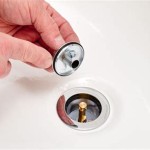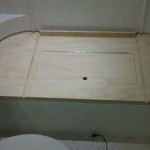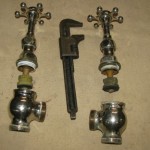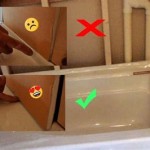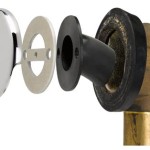How To Install A Shower Screen On A Bathtub Drainage
Installing a shower screen on a bathtub drainage system is a common home improvement project that can significantly enhance the functionality and aesthetics of a bathroom. A shower screen prevents water splashing, containing it within the bathing area and reducing the risk of slips and water damage to surrounding surfaces. However, ensuring proper installation is essential for a successful outcome. Neglecting necessary precautions and steps can lead to leaks, instability, and potential damage to the bathtub and surrounding structures. This article provides a detailed guide on how to install a shower screen securely and efficiently, keeping in mind the critical aspect of bathtub drainage to prevent water accumulation and potential issues.
Before commencing the installation, it is imperative to understand the different types of shower screens available. Common types include framed, frameless, and semi-frameless screens. Framed screens usually consist of glass panels enclosed within a metal frame, offering durability and ease of installation. Frameless screens, on the other hand, present a more modern, minimalist look, often utilising thicker glass and requiring precise installation to ensure stability. Semi-frameless screens strike a balance between the two, featuring a frame around the edges but maintaining a cleaner, more open aesthetic.
The correct choice of shower screen depends on several factors, including the bathroom's design, the available budget, and personal preferences. Consideration should also be given to the type of bathtub drainage system already in place. A poorly installed shower screen can impede drainage, leading to water pooling and potential mold growth. Therefore, integrating the screen seamlessly with the existing drainage system is crucial for a durable and functional setup.
Essential Tools and Materials
Prior to initiating the installation process, gathering the necessary tools and materials is crucial for a smooth and efficient project. A basic toolkit should include:
- A measuring tape: For accurate measurements of the bathtub and surrounding walls.
- A spirit level: To ensure the shower screen is installed perfectly level.
- A pencil: For marking drilling locations and cutting lines.
- A drill with appropriate drill bits: Suitable for drilling through tiles and the materials of the wall.
- A screwdriver (various sizes): To tighten screws and secure the screen components.
- A caulking gun: For applying sealant and waterproofing the edges of the screen.
- Silicone sealant (mildew-resistant): To prevent water leakage and mold growth.
- Safety glasses and gloves: To protect eyes and hands during the installation.
- A clean, dry cloth: For wiping surfaces and cleaning up any spills.
- A hacksaw or similar cutting tool: For trimming any necessary components to size.
In addition to these tools, possessing all the components of the shower screen kit is paramount. This usually comprises the glass panels, frame (if applicable), hinges, handles, fixing screws, and any specialized brackets or supports. Reviewing the manufacturer's instructions meticulously guarantees that all required components are on hand and understood before commencement.
Preparation and Measurement
The first step involves preparing the bathroom area for installation. This involves removing any obstructions around the bathtub, such as toiletries, bath mats, and shower curtains. Protecting the bathtub surface with a drop cloth or similar material is advisable to prevent scratches or damage during the installation process. Any existing shower curtains or rails must be removed, and the surrounding area should be thoroughly cleaned to remove any dirt, grime, or residue that may hinder adhesion of the sealant.
Next, accurate measurements of the bathtub and surrounding walls are essential. Measure the width of the bathtub where the shower screen will be installed, and confirm the height required for the screen to provide adequate coverage. If the walls are not perfectly straight, take multiple measurements at different points to identify any variations. These measurements will determine the size and type of shower screen required. Transfer these measurements onto the wall using a pencil and spirit level, marking the intended location of the screen's frame or supporting brackets. Double-check all measurements to ensure accuracy before proceeding to the next step.
It's important to assess the existing drainage system at this stage. Identify the location of the bathtub drain and ensure that the shower screen installation will not impede water flow. If the screen's design includes a bottom seal or threshold, ensure that it will not trap water or obstruct access to the drain. Consider the slope of the bathtub floor and whether additional measures, such as a specifically designed drainage channel, may be needed to facilitate water runoff.
Installation Procedure
The installation procedure may vary depending on the type and design of the shower screen. However, the following steps provide a general guideline:
- Marking Drilling Locations: Using the measurements taken earlier, mark the locations on the walls where the shower screen frame or supporting brackets will be attached. Use a spirit level to ensure the marks are perfectly aligned and vertical.
- Drilling Pilot Holes: Using a drill with an appropriate drill bit for the wall material (e.g., tile, drywall, concrete), carefully drill pilot holes at the marked locations. Start with a smaller drill bit and gradually increase the size until it matches the diameter of the screws to be used. Exercise caution when drilling through tiles to avoid cracking or chipping.
- Attaching the Frame or Brackets: Align the shower screen frame or supporting brackets with the pilot holes and secure them to the wall using screws. Ensure the frame or brackets are firmly attached and level.
- Installing the Glass Panel(s): Carefully lift the glass panel(s) into place, following the manufacturer's instructions. If the screen has a frame, slide the glass panel(s) into the frame channels. If it is a frameless screen, attach the glass panel(s) to the supporting brackets using clamps or screws, depending on the design.
- Adjusting and Aligning: After installing the glass panel(s), adjust and align them to ensure they are properly positioned and aligned with the frame or brackets. The glass panel(s) should move smoothly and freely without any obstructions.
- Applying Sealant: Using a caulking gun, apply a bead of mildew-resistant silicone sealant along the edges of the shower screen where it meets the walls and bathtub. This will prevent water leakage and mold growth. Smooth the sealant with a wet finger or tool to create a clean, professional finish.
- Final Check and Clean Up: Conduct a final check of the shower screen installation to ensure all components are properly installed and secured. Test the screen's movement and check for any leaks. Clean any excess sealant or debris from the area.
During the process, it is vital to continually assess the bathtub drainage. Assure no components of the screen are blocking or hindering access to the drain. A clear path for water to exit the bathing area is crucial to prevent water damage and maintain hygiene.
Ensuring Proper Drainage
Effective drainage is a critical factor during shower screen installation, often overlooked but essential for the long-term functionality and hygiene of the bathroom. Several considerations and steps can be taken to ensure proper drainage:
- Slope Adjustment: After installing the screen, evaluate the slope of the bathtub floor. If the slope is insufficient to direct water towards the drain, consider installing a sloped threshold or a small drainage channel along the base of the screen.
- Sealing and Waterproofing: Proper sealing is vital to prevent water from seeping behind the screen or into the surrounding wall cavities. Use a high-quality, mildew-resistant silicone sealant to create a watertight barrier along all edges of the screen. Pay particular attention to the corners and areas where the screen meets the bathtub.
- Regular Cleaning: Regular cleaning can prevent soap scum and mineral buildup from obstructing the drain. Use a mild cleaning solution and a soft brush or cloth to remove any residue that may accumulate around the drain and along the bottom edges of the screen.
These measures guarantee a dry, safe, and hygienic bathroom environment, preventing water damage and minimizing maintenance requirements. By carefully considering and addressing the drainage aspects of shower screen installation, homeowners can enhance the longevity and functionality of their bathroom fixtures.
Addressing Potential Problems
Despite careful planning and execution, unforeseen issues can occasionally arise during shower screen installation. Being prepared to address these problems efficiently can prevent delays and ensure a successful outcome.
- Wall Inconsistencies: If the walls are not perfectly plumb or straight, adjusting the shower screen's frame or brackets might be necessary to ensure a secure and level fit. Shims can be used to compensate for minor irregularities in the wall surface.
- Glass Panel Alignment: If the glass panels are not properly aligned, carefully adjust the hinges or brackets to achieve a smooth and even appearance. Loosening the screws slightly may assist with the alignment process.
- Water Leaks: If water leaks are detected after installation, reapply sealant to the affected areas. Ensure the sealant is applied evenly and completely fills any gaps or cracks.
- Drainage Issues: If the shower screen is causing drainage problems, inspect the screen's bottom edge for any obstructions. Trim or adjust the screen if necessary to allow water to flow freely towards the drain.
Addressing these potential problems promptly and effectively can prevent them from escalating and compromising the integrity of the shower screen installation. With careful attention to detail and a proactive approach, homeowners can overcome these challenges and achieve a long-lasting and functional shower enclosure.
Properly installing a shower screen involves careful planning, precise measurements, and meticulous execution. By understanding the different types of screens, gathering the necessary tools and materials, and following a step-by-step installation procedure, homeowners can achieve a professional-looking result that enhances the functionality and aesthetics of their bathroom. Moreover, ensuring proper drainage and being prepared to address potential problems are essential for a long-lasting and trouble-free shower screen installation. Always refer to the manufacturer's instructions for specific guidance and recommendations.

Installing A Bath Screen

Fitting A Bath Shower Screen

How To Fit A Bath Screen Step By Diy Guide

How To Fit A Shower Screen In 3 Steps Plumleys Plumbing Merchant

Shower Screen And Bathtub Installation The Handyman London
How To Fit A Shower Screen

A Foldable Shower Screen Installation

Elegant 4 Panel Folding Bath Shower Screen 800mm Over Door Toughened Safety Clear Glass Bathtub Pivot Swing

How To Fit A Shower Screen

Aqualux Aqua 4 Fold Bath Screen Installation Guide


